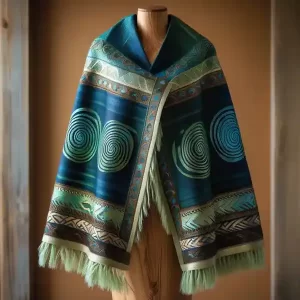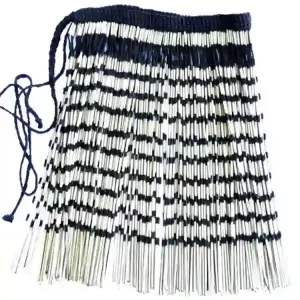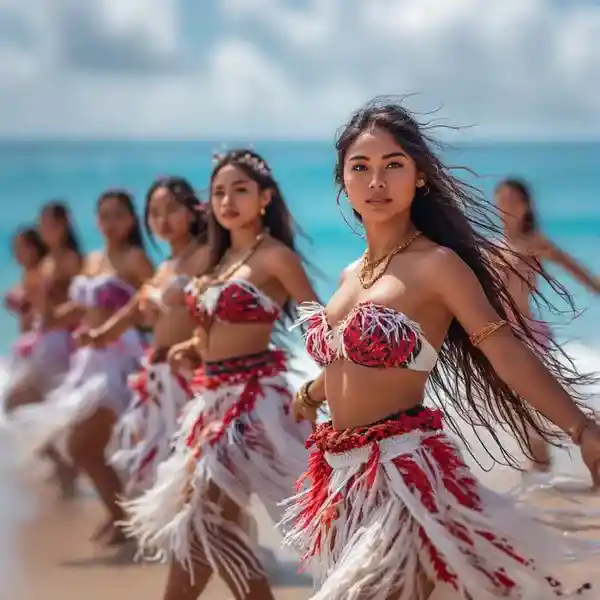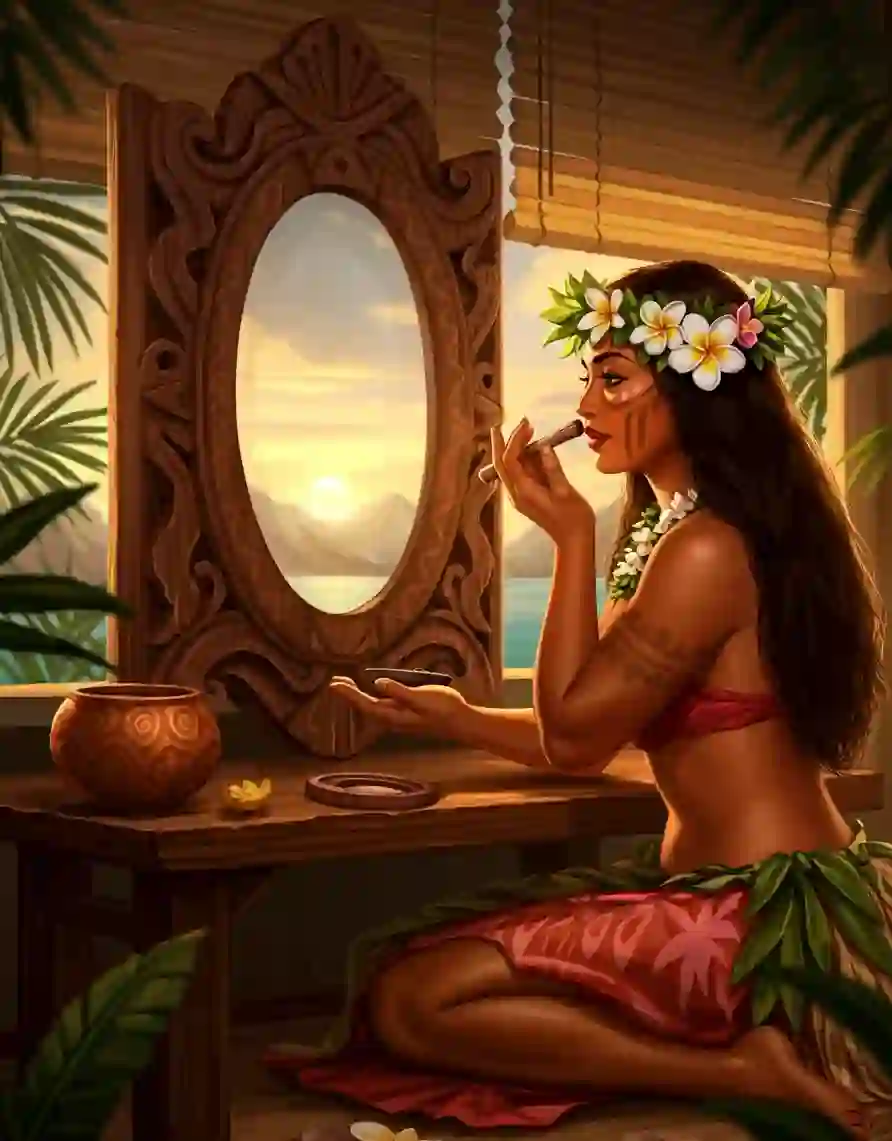Traditional Māori Clothing and Attire
A Cultural Tapestry Distinct from Other Polynesian Traditions
Traditional Māori clothing reflects a deep connection to nature, artistry, and tribal identity. Worn by the indigenous people of Aotearoa (New Zealand), Māori attire has evolved from practical garments made for survival in a cool temperate climate to symbolic regalia used in ceremonial and cultural contexts. While sharing roots with other Polynesian cultures, Māori clothing developed its own distinct forms, materials, and meanings, shaped by the environment and the Māori worldview.
Materials and Climate: The Foundation of Distinctiveness
Polynesian cultures span a vast area, from Hawaii in the north to Rapa Nui (Easter Island) in the east and Aotearoa in the south. One of the most significant influences on traditional clothing across these cultures is climate. The tropical climate of islands like Samoa, Tonga, and Tahiti allowed for minimal clothing, often made from bark cloth and lightweight natural fibers.
In contrast, the temperate and at times chilly environment of Aotearoa necessitated warmer garments. This difference laid the groundwork for the distinctiveness of Māori attire.
Raranga (Weaving) and Harakeke (Flax)
The cornerstone of traditional Māori clothing is weaving, particularly using harakeke (New Zealand flax). Unlike many Polynesian groups who used beaten bark (tapa or kapa cloth), Māori relied heavily on weaving for practical and ceremonial dress. Māori weavers developed highly intricate techniques, such as whatu (a finger-weaving method), to produce strong, warm, and decorative garments.
Key Māori Garments and Adornments
Kākahu (Cloaks)

Cloaks, or kākahu, are among the most iconic forms of Māori clothing. These were not only utilitarian but also status symbols. There are many types of cloaks, with the most prestigious being:
-
Korowai: A cloak adorned with tāonga (precious items) like hukahuka (tassels), feathers, or dog hair. Korowai are worn during formal occasions and by those of high status.
-
Kahu huruhuru: Feathered cloaks, often showcasing kiwi or other native bird feathers. These are highly prized and painstakingly crafted.
-
Kahu kiwi: Specifically made from kiwi feathers, this garment carries immense mana (prestige) due to the rarity and sacredness of the kiwi bird.
Cloaks were passed down through generations and were a visible expression of genealogy, power, and identity.
Piupiu

Another distinctive Māori garment is the piupiu, a skirt made from prepared flax strands that create a rhythmic rustling sound when worn in haka (dance) or ceremony. The movement and sound of the piupiu add a dynamic element to performances and reinforce communal unity.
Tā moko and Adornment
Māori identity also includes tā moko (tattooing), which is deeply intertwined with clothing and presentation. Tā moko, often worn on the face, thighs, and buttocks, signify genealogy, social status, and personal achievements. This differs from other Polynesian tattooing styles like the Samoan pe’a and malu, which are typically more geometric and applied to the lower body.
Māori also adorned themselves with:
-
Pounamu (greenstone) pendants: Such as hei tiki or kuru, passed through lineage and imbued with spiritual power.
-
Bone and wood jewelry: Carved with motifs representing tribal affiliations, ancestry, or spiritual meanings.
Contrasts with Other Polynesian Cultures
While all Polynesian cultures share common ancestral roots, the material culture—including clothing—diverged based on environmental factors and evolving societal needs.
Samoa, Tonga, and Tahiti
-
Materials: These regions used tapa cloth (also called siapo or ngatu), made from the inner bark of trees like mulberry. Tapa was painted or stamped with intricate geometric patterns.
-
Garments: Typical clothing included lava-lava (wrap skirts), simple tunics, and loincloths. These were light and breathable, suited to tropical weather.
-
Adornments: Polynesian neighbors also used feathers and shells, but their decorative styles were often more geometric and symbolic of rank or family.
-
Tattooing: Samoan tattooing (such as the male pe’a) covers the lower body and is a rite of passage, deeply linked to cultural identity. It tends to be more abstract compared to the biographical nature of Māori tā moko.
Hawaii
-
Feather Cloaks (ʻahuʻula): The Hawaiian elite wore cloaks similar in concept to the Māori korowai. These were made from thousands of tiny bird feathers, particularly from now-extinct species.
-
Kapa Cloth: Like other Pacific peoples, Hawaiians made bark cloth from wauke (paper mulberry), dyed with natural pigments, and beaten into soft fabric.
-
Ornamentation: Hawaiians also wore leis and intricate headpieces, with symbolism tied to spirituality, nature, and status.
Spiritual Significance and Social Function
Māori clothing often served a spiritual function. The act of weaving was seen as sacred, with spiritual protocols governing how and when garments could be made. Garments such as cloaks were imbued with mana—spiritual power—and were used in birth rituals, funerals, and rites of passage.
This spiritual reverence sets Māori weaving apart from other Polynesian clothing traditions, where fabric and adornments, though meaningful, might not carry the same ritualized production practices.
Modern Influence and Revitalization
Today, Māori clothing continues to evolve. Contemporary Māori designers incorporate traditional weaving and patterns into modern fashion, contributing to a broader indigenous cultural renaissance. Fashion shows, art exhibitions, and kapa haka festivals showcase the living nature of Māori clothing, blending tradition with innovation.
In comparison, other Polynesian cultures have also revived traditional dress for tourism, cultural pride, and performance, but Māori clothing, particularly cloaks and piupiu, remains among the most symbolically rich and culturally codified in Polynesia.
While Māori traditional attire shares ancestral links with other Polynesian cultures, it is marked by distinctive weaving techniques, use of harakeke, climate adaptation, and spiritual depth. The Māori approach to clothing is holistic—combining practicality, identity, artistry, and ritual—making it one of the most intricate and revered traditional clothing systems in the Pacific. As these cultural garments are revitalized and honored in modern contexts, they remain a powerful expression of Māori resilience, heritage, and pride.



